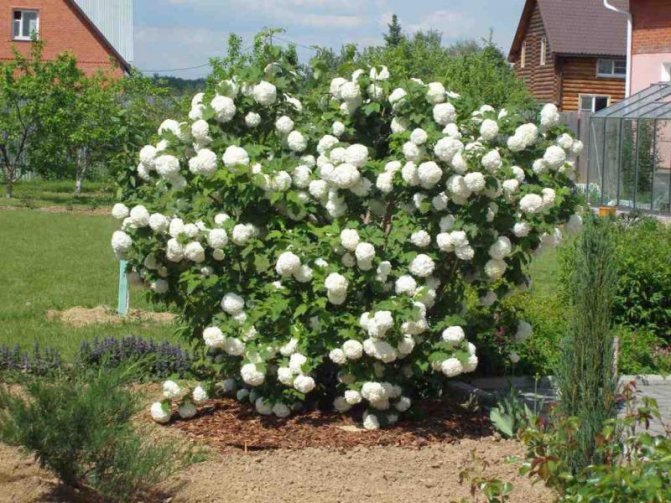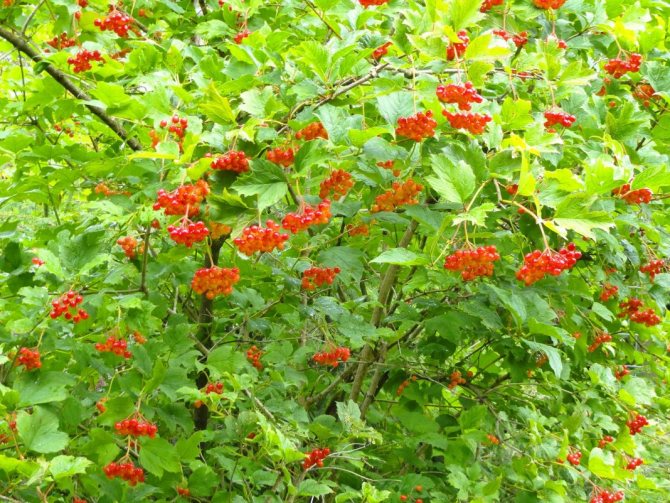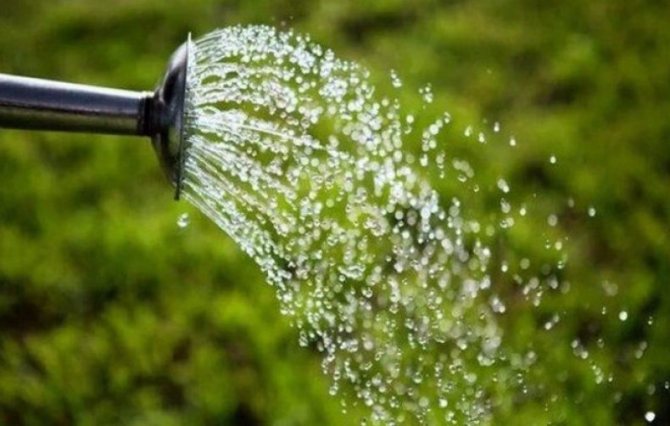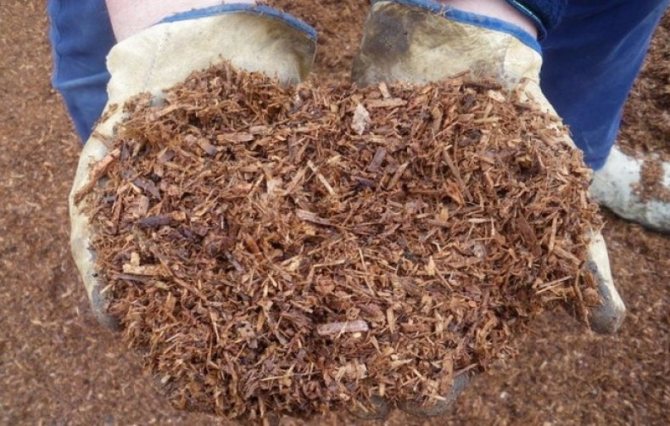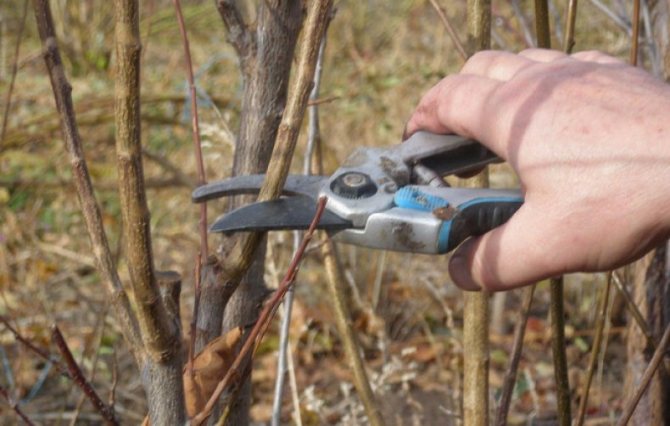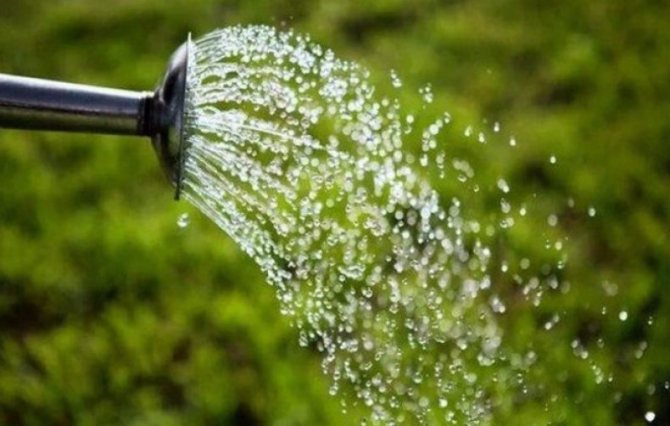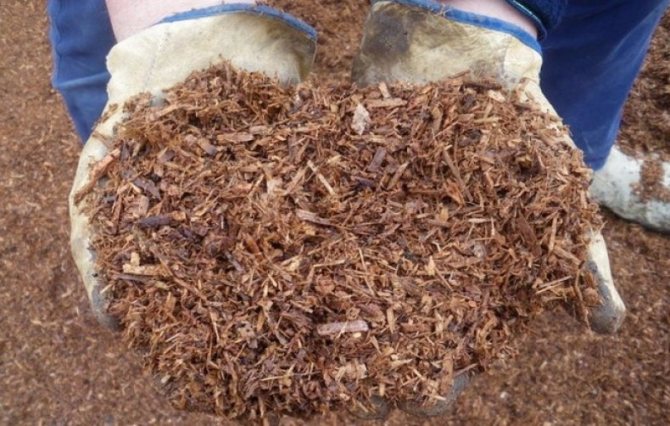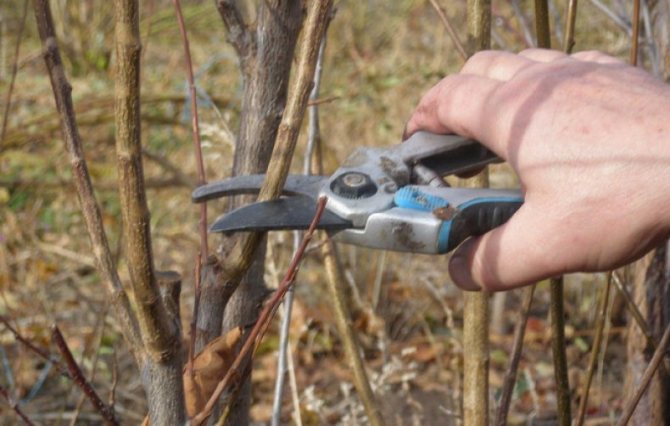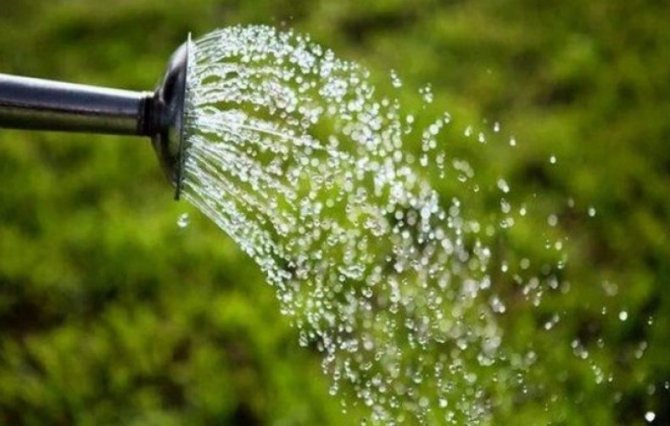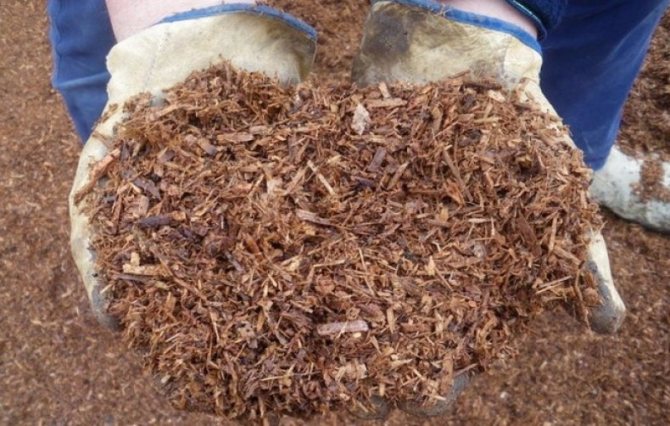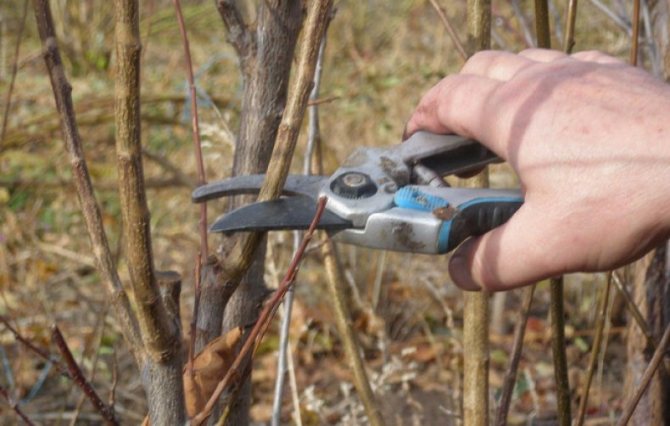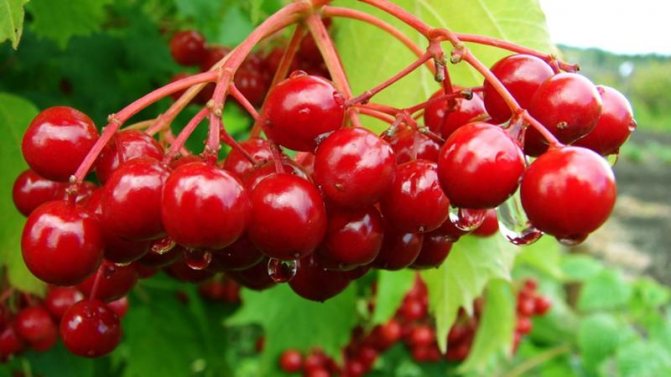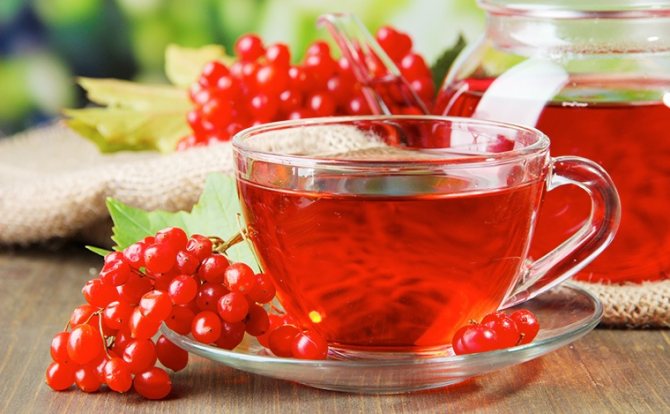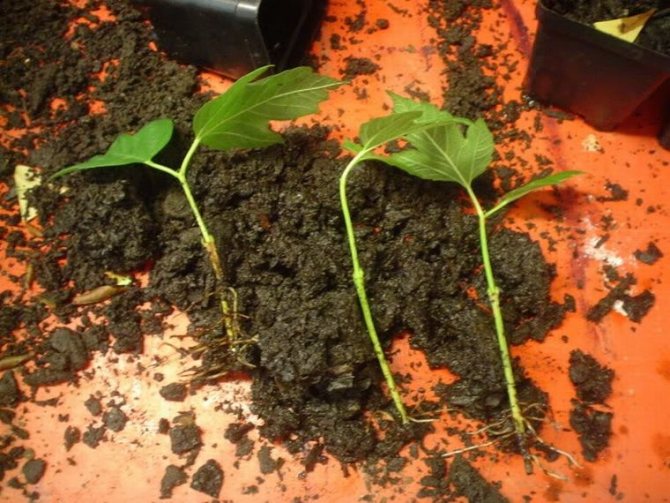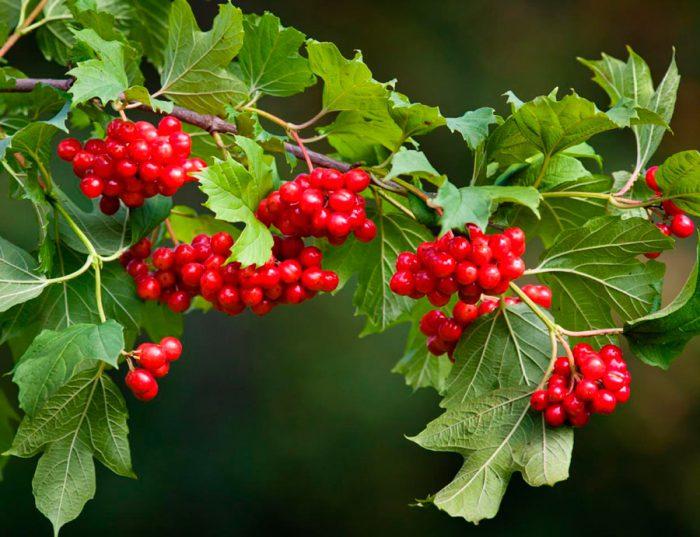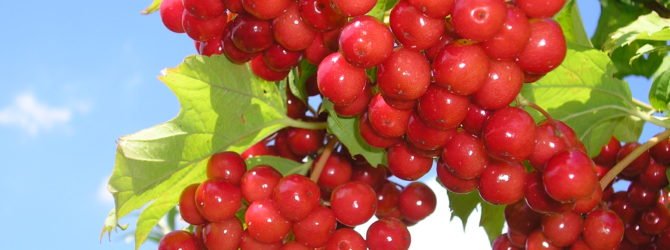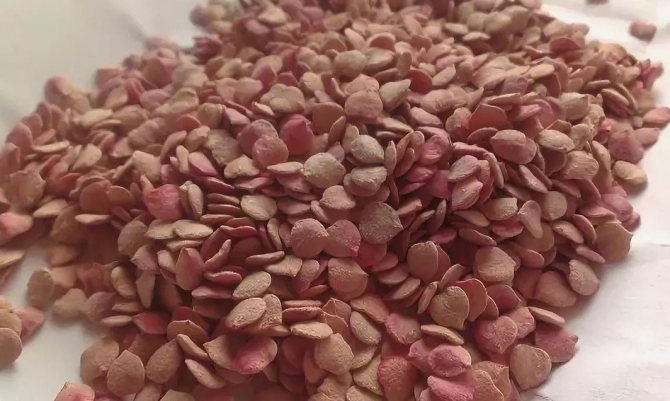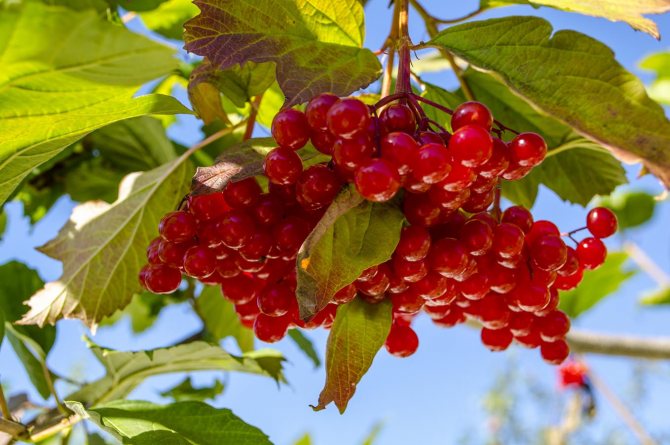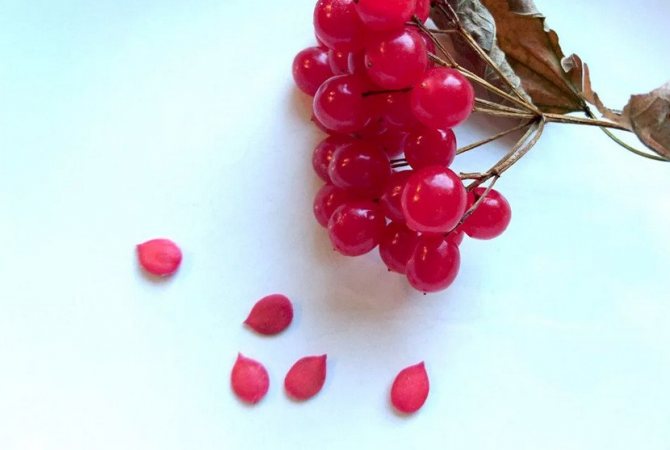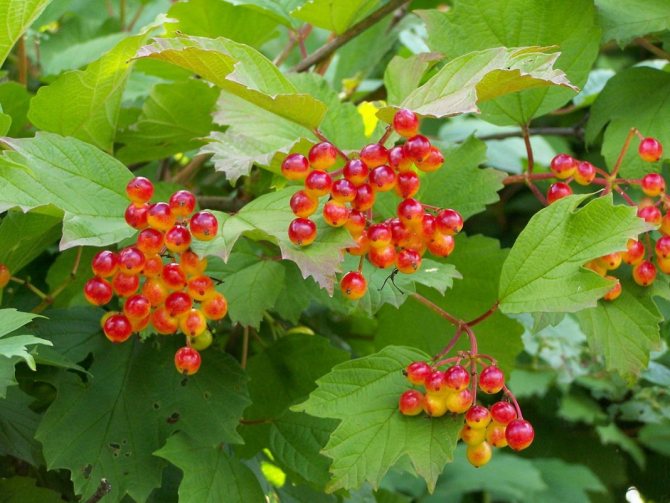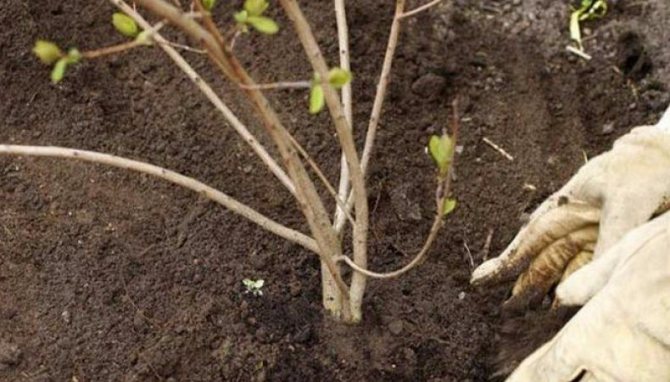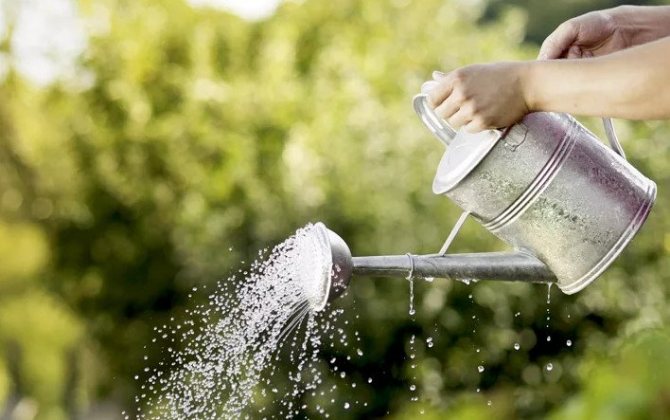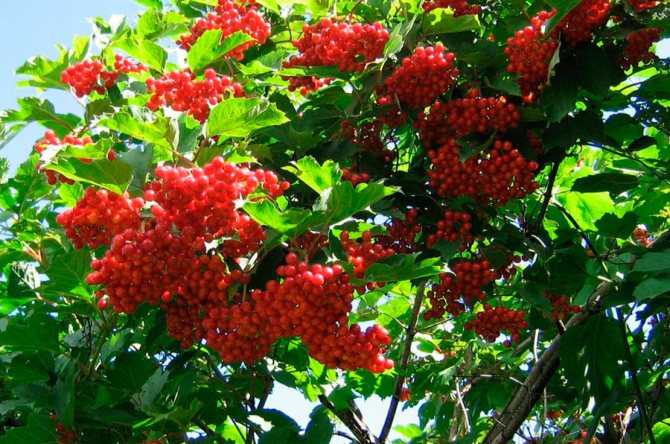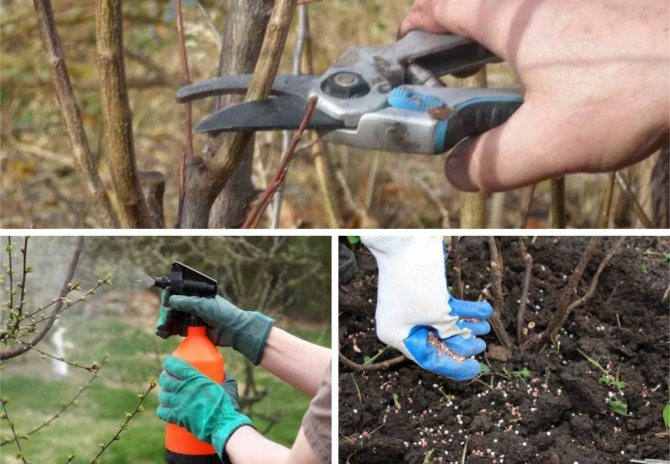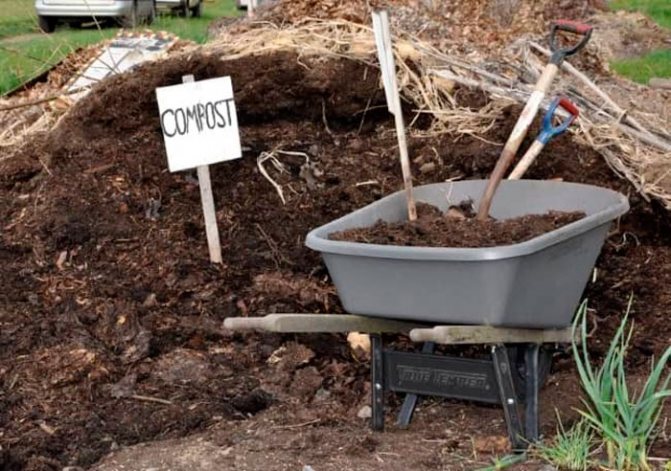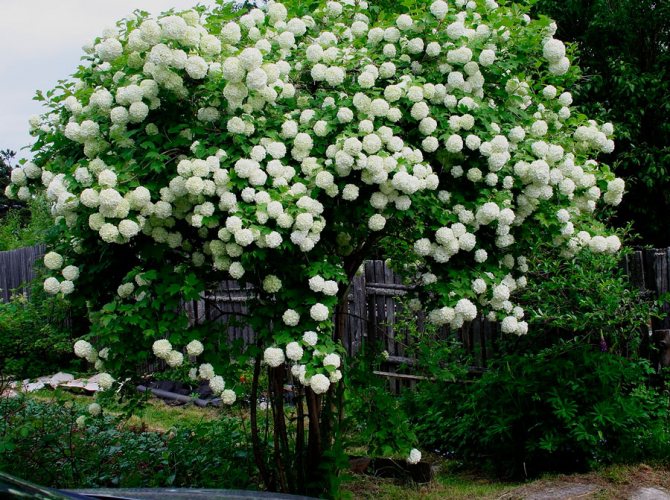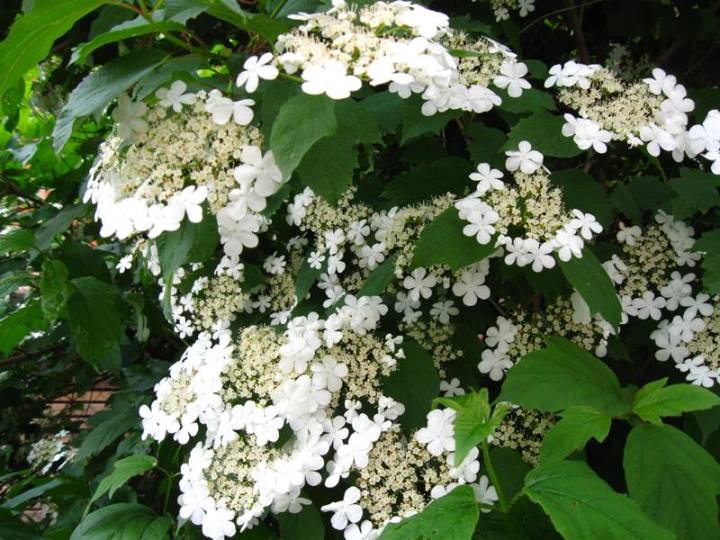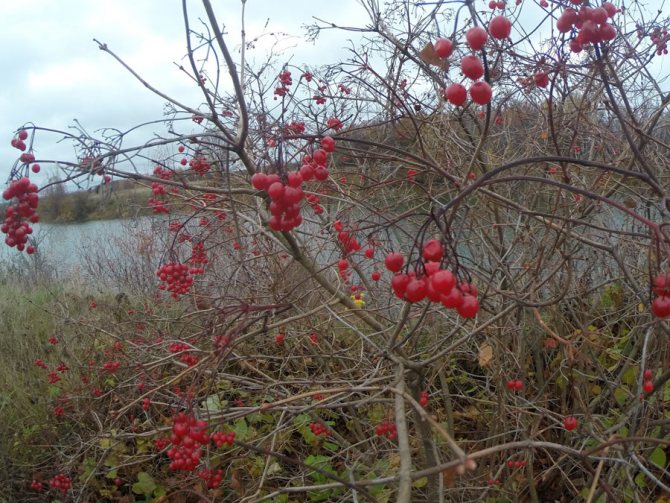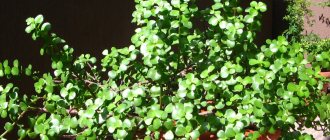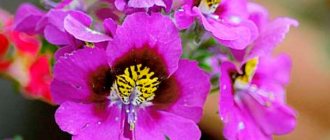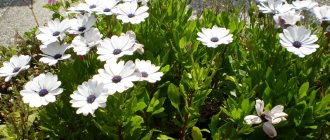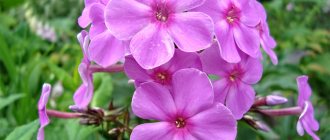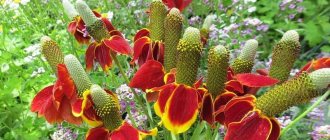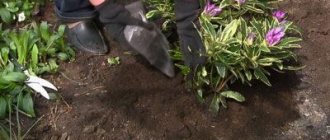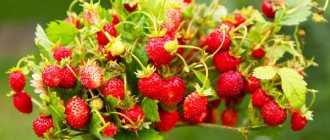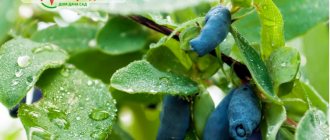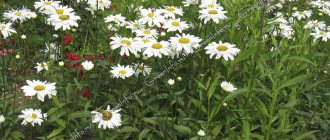Kalina Buldenezh is an amazing plant in terms of beauty. Magnificent snow-white balls, strewn all over the bush, can hardly leave anyone indifferent. If you are not yet growing a beautiful shrub, then it's time to plant one in your garden. Read on how to plant Buldenezh viburnum correctly in spring and autumn.
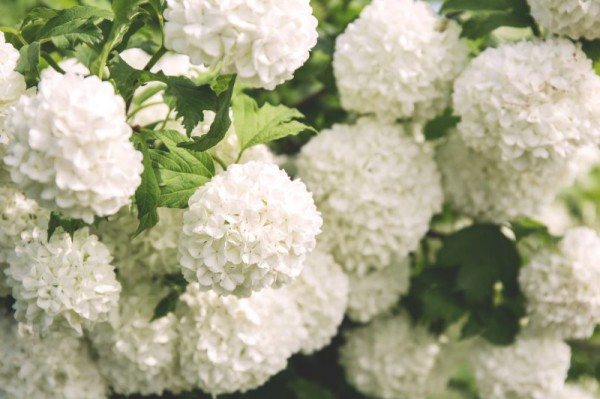
Here you will find out:
Pick up time and place
In the spring, viburnum is planted in the ground before young leaves unfold, and in the fall - before the onset of frost. Where to plant viburnum at their summer cottage?
This plant is not capricious in terms of soil quality, and it can even grow on a slope. It is desirable to determine the place of the viburnum in an open area. In the shade, it will not die, but it will also bear fruit much more modestly. In addition, both young and mature bushes are in dire need of water, with a lack of water, the flowers will fall off before the ovary appears. Accordingly, the plant needs moist soil, and the presence of groundwater for the viburnum is only a plus. The most favorable place for planting this plant is next to a reservoir.
A hole for a shrub is dug in advance with a size of 50 by 50 cm and a depth of 40-50 cm.When planting several bushes, the distance between the plants should be about 3 m.The hole should be covered with a soil mixture consisting of an upper fertile layer and humus, add 2 glasses of Nitrofoski. The soil in the planting hole is formed with a mound and a seedling is placed on it, straightening the roots. Then the pit is filled with the remaining soil and compacted, forming a small roller along the diameter of the pit, the planting is watered abundantly with water.
When planting, it is important to position the seedling so that the root collar is 5-6 cm below ground level.
Care: how to plant and prune bushes?
You need to take care of the viburnum as well as for other cultivated plants: weed control, regular watering, loosening the soil in the near-trunk circle, mulching, cutting and forming the crown, fighting diseases and pests.
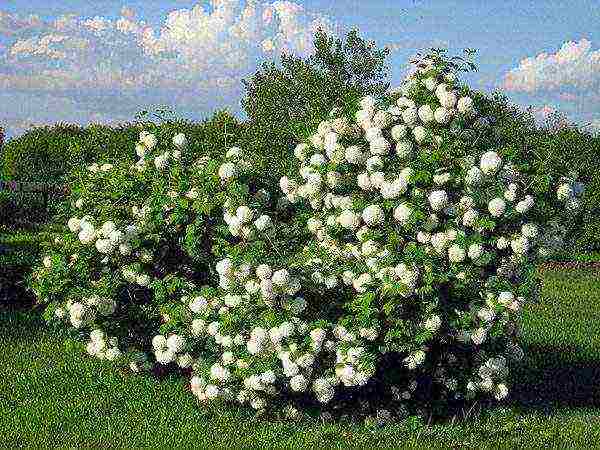

Spring flowering viburnum
Watering
Watering is carried out in the evening, shedding the soil by 40 cm. Adult bushes should be watered during the growing season and when the berries ripen.
Top dressing
Usually, dressings are made dry, in hot dry weather it is better to dissolve them in water. You need to feed the plant several times:
- In early spring, when young leaves bloom. Urea is introduced (2 tbsp. L.);
- Fertilizer is applied just before flowering. Wood ash (1/2 liter) or potassium sulfate (2 tbsp. L.) Should be scattered;
- Feeding is carried out after flowering. Nitrophoska or nitroammofoska is introduced (2 tbsp. L.).
- Liquid dressing is applied in October, when the crop has already been harvested. Potassium sulfate (2 tablespoons) and superphosphate (3 tablespoons) are added to ten liters of water. Each viburnum bush requires two buckets of fertilizer
Growing viburnum from a cutting
You can grow a viburnum plant from seeds, root cuttings, by dividing the bush, using cuttings and cuttings. The best option is to plant cuttings. They are cut from well-bearing viburnum bushes in the first half of summer during the flowering period. At this time, they are still green and flexible. For grafting, use the middle part of the shoot, each should have at least 3 nodes, the height of the cutting is about 15 cm.The cut should be oblique, the upper leaves are shortened, the lower foliage is removed.
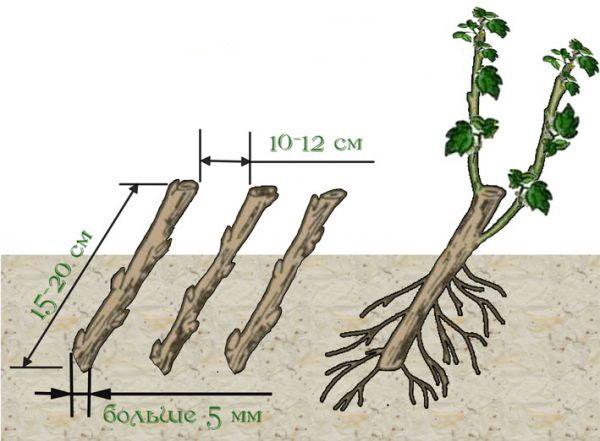

The lower cut of the cutting is dusted with Kornevin or soaked for 10-12 hours in a Heteroauxin solution. Then they are placed in the cuttings. Cuttings should be planted in the substrate at an angle and cut down, so that the surface of the bevel cut is located horizontally relative to the ground. The cuttings are covered, now, in order to take root, the cuttings need a high temperature - 28-30 degrees and high humidity. Rooting takes place within 3-4 weeks. Rooted shoots will begin to grow shoots from the sinuses. From this time on, the cuttings need to be gradually tempered, removing the shelter in the warm part of the day. Fully established cuttings can be transplanted into garden pots and buried in the garden. The bushes will be ready for planting in the ground next spring.
Planting viburnum seedlings
It is easier and faster to propagate a plant vegetatively. A bush grown by seedlings will be able to bear fruit in 2-3 years after planting. Also viburnum can multiply by dividing the bush.
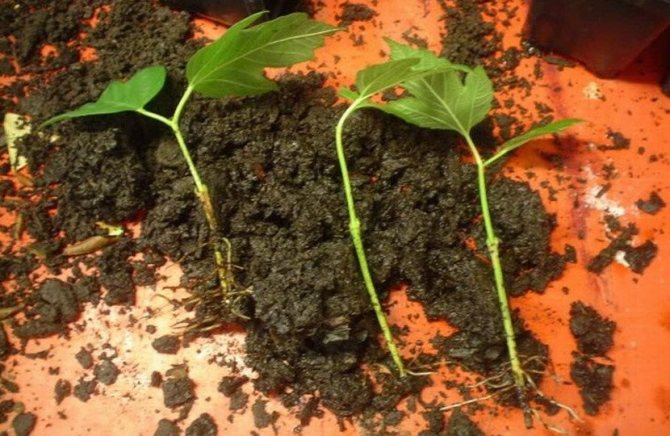

In this case, the planting material can be vertical shoots and cuttings.
When to plant
The most favorable time for planting seedlings is late autumn. The bushes planted at this time take root better. The time should be chosen before the first frost. Planting can also be done in spring. This must be done before the kidneys open.
Propagation by horizontal layers
This is another easy way to propagate a viburnum bush. In the spring, a strong annual shoot is shortened by 1/5 part and bent to the ground. The land is preliminarily cleared of weeds, dug up and a small groove 4-5 cm deep is made. The shoot is pinned to the ground in several places and wait until new shoots up to 10-15 cm grow from the buds. After that, the furrow is covered with loose soil mixture or peat, leaving young shoots on the surface.
During the summer, young roots should appear on each shoot. During the season, you can spud growing shoots 2-3 times. In autumn, cuttings with grown shoots are cut off from the main bush, the rooted shoots are separated from each other and planted in a permanent place. There is a method in which the shoots are planted in pots with soil mixture, which are dropped in the garden. So it will be convenient to care for a young plant, it is convenient to cover it for the winter. And next spring, plants can be planted in a permanent place in the usual way.
How to find the time for boarding
Some gardeners plant viburnum in spring, however, with this approach, increased watering of the plant will be required, which is not always possible to implement. In this regard, planting in the fall looks more attractive - there is a minimum of work, and the overwintered seedling does not require close attention throughout almost the entire season.
It is easy to choose a time for work: you need to observe the wild-growing viburnum or look at the neighbors who grow this plant. As soon as the beginning of leaf fall becomes obvious, viburnum can be planted in open ground without fear.
Previously, it is undesirable to do this - root processes can grow, which will not have time to get stronger and will die in winter. As a result, the bush will be weakened.
It is good if after planting the viburnum it will take at least 2 weeks before the first frost, then it will have time to take root.
Plant care
First of all, it is worth taking care of young plants. Regardless of the degree of soil moisture, watering is carried out every seven days: 2 buckets of water for 1 short bush and 4 buckets for a large plant. Ripe viburnum is watered with high quality in spring - when young branches begin to grow and in summer - in the process of fruit ovary.
Fertilizing the soil is equally important. There are 4 stages of plant development, when it is necessary to enrich the soil for full development and a lush harvest: in the spring - during the opening of the buds, then - during the appearance and blooming of flowers, in the middle of the season, and also in the fall - during the ripening of berries.
Viburnum prevention
To prevent various diseases, fungi and pests, the bush must be processed. Preventive measures should be taken in the fall and spring. Thus, viburnum can be protected from many serious diseases and insect attacks. Prevention will save time and effort spent on plant treatment.
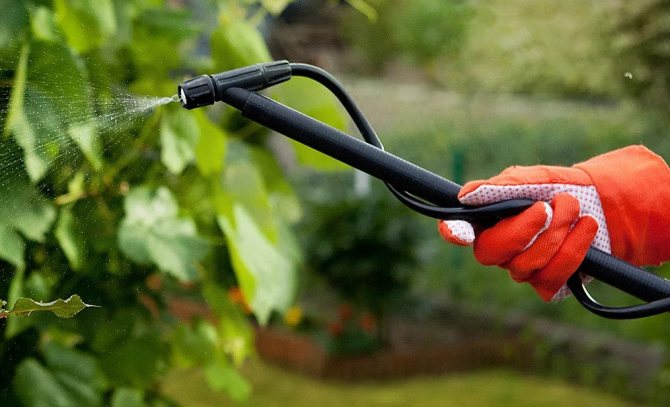

Prevention will save time and effort spent on plant treatment.
From disease
Viral diseases are nearly impossible to cure and difficult to prevent. Extermination of pests can reduce the chance of developing such diseases in a plant. Exterminating the insects that carry them will significantly reduce the risk of disease. To do this, you need to spray the trees with insecticides. Fungal diseases are excellent at preventing fungicides.
From pests
At home, you can treat the plant with insecticides. It is also necessary to prevent the appearance of leaf beetle caterpillars on the plant. To do this, after the leaves have fallen in the fall, cut off all dried branches and destroy them. It is in dry branches that the pest lays eggs.
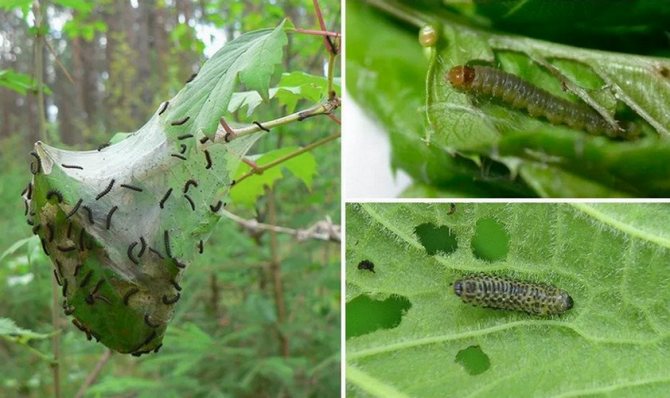

Viburnum is a very beautiful plant. With the right agricultural technology, it will give a rich healthy crop for many years and please the eye. The bush is able to become a decoration of any garden and cottage.
Pruning and shaping the plant
How the viburnum will grow - a shrub or a small tree - depends on you. If there is free space on the site, the viburnum is left to grow in the form of a bush. In order for the plant to bear fruit well, the length of the branches is shortened to 40 cm.As soon as the first warmth comes in the spring, it is necessary to prune the useless branches in order to renew the bush and thin it out.
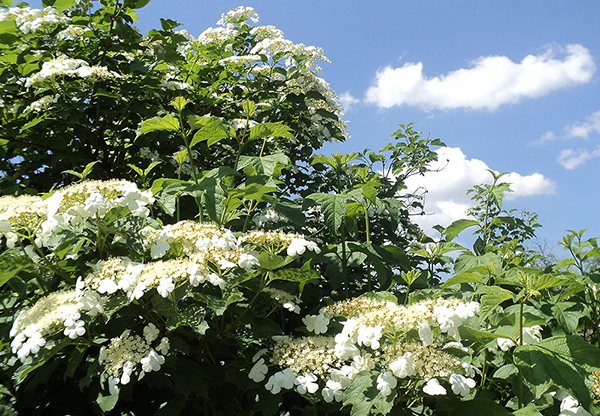

If there is not much space and every square meter is expensive - viburnum can be formed in the form of a tree. This process can be started already in the second year of the plant's life. For this, all young branches are cut from the bottom to a certain height (usually about 1 m). In the future, all shoots up to this level will need to be plucked regardless of the season (pinching). After 3 years, the viburnum will be formed like a tree, the top will need to be shortened, then the crown will gradually grow and become more magnificent.
After the harvest is harvested, autumn pruning is carried out. Its purpose is to remove all dry and affected branches, as well as dried out brushes.
Why a shrub may not bloom: reasons
Situations are also possible when the viburnum Buldenezh does not bloom. Why is this happening? There may be several reasons for the lack of flowering:
- lack of regular watering;
- growing in direct sunlight or strong shade;
- lack of feeding for a long time;
- invasion of pests, disease.
As you can see, viburnum may not bloom due to improper or inadequate care. If you correct this situation, then it will certainly delight you with a magnificent color.
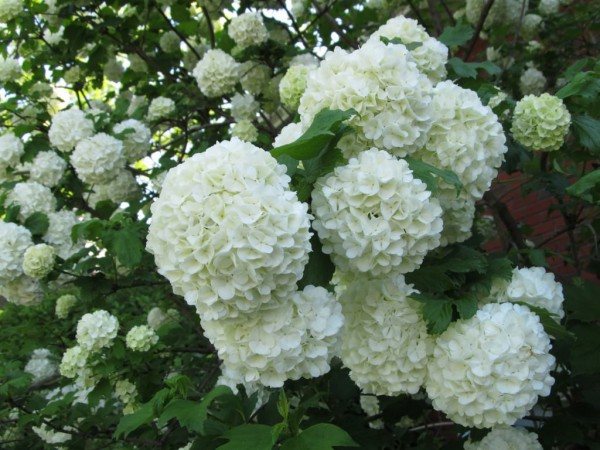

Kalina Buldenezh is the best option for both landscape designers and ordinary gardeners. The plant is unpretentious, but requires full care. If you plant, grow and care for a plant correctly, you can get abundant and lush flowering in gratitude.
Video: snow balls or beautiful Kalina Buldenezh
How and when to pick viburnum berries
In the Moscow region, viburnum berries begin to be harvested in the first half of October. Dry berries should get into the basket, so do not rush if it has been raining recently. In dry weather, it is better to collect viburnum after 9 am, when the night dew has already disappeared from the berries, but without waiting for noon. An equally suitable time is evening or throughout the day, if the sun does not come out from behind the clouds.
Viburnum clusters are carefully cut with grape scissors and put in a basket or special bags for harvesting.
Growing this valuable shrub is practically no hassle, it will decorate any site in spring, summer and autumn. Among the positive aspects, in addition to the undoubted benefits of berries, it should be noted the rapid growth of this plant, the beautiful appearance and aroma of its flowers.
What can be grafted on viburnum
Plants are grafted to improve their characteristics. It is recommended to plant plants of the same species, cultivated and wild variety.For example, you can increase the resistance to pests of the common viburnum by grafting it with the Pomegranate bracelet variety. Grafting between different species will not give satisfactory results.
Did you know? Some varieties of viburnum do not bear fruit and are used exclusively for decorative purposes. For example, viburnum Buldenezh, which is valued for its unusual beautiful flowering.
Decorativeness
In late autumn, when all the flowers have stopped blooming, grapes and apples are harvested, the garden looks sad. But if a viburnum grows somewhere on the site, the beauty of the autumn season does not leave it.
Viburnum looks especially elegant in late spring and early summer. Depending on the species, the flowers can be of different colors: white, pale pink, pale yellow. Inflorescences and flowers themselves come in different shapes and sizes. In an ordinary viburnum, the inflorescences look like umbrellas, in the middle there are flowers - fruiting, along the edge - more noticeable flowers, they are larger and more attractive to bees.


As for the viburnum leaves, they are no less pleasing to the eye. In ordinary viburnum, the leaves are pointed, medium in size. In decorative species, the shape of the leaves is more like an oval one. In the warm season, they are juicy green, in the fall they turn yellow, light red, burgundy. Sometimes there are multi-colored leaves.
Description
Viburnum is really quite a beautiful tree, the fruits of which have many beneficial effects for the body and protection from some pests. The tree grows up to 4 m, has a highly developed root system and is shade-tolerant and frost-resistant. The bark has a wrinkled brown-gray texture. Leaves are rounded, large-toothed.
Viburnum can bloom mainly in May-June. Duration of flowering up to 3 weeks. The flowers are white, collected in corymbose inflorescences. The marginal flowers of the inflorescence are used to attract insects, therefore they are sterile, and the fruits are tied on smaller middle flowers.
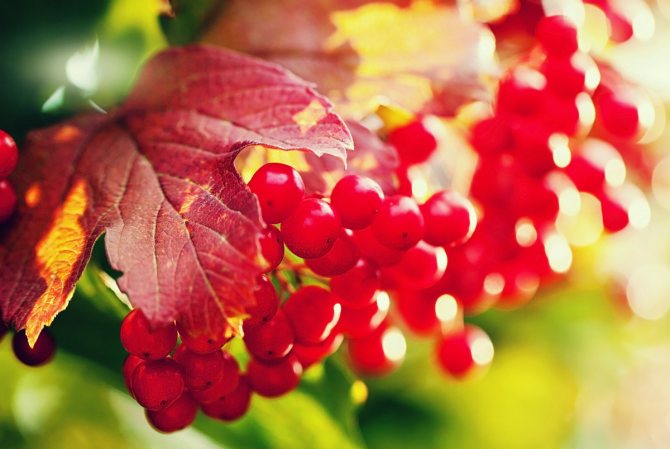

Fruit color ranges from red to brown
The viburnum tree begins to bear fruit at the age of 5-6, and the peak yield occurs by the age of 12. The tree can withstand frosts down to -35 ° С, as in the Urals, and the berries are preserved on it until spring. Viburnum berries are spherical and collected in a brush. The color of the fruit varies from red to brown, almost black, depending on the type of tree. The seed of the berry is small, flat. The berries are bitter to taste. However, if you remove them after frost and process them with sugar or honey, then the bitterness disappears.
Viburnum fruits have a useful composition of:
- vitamins C, P;
- carotene;
- valeric, formic, acetic acid;
- Sahara.
Such a berry is useful for people with problems:
- liver;
- gallbladder;
- brain;
- hearts;
- vessels;
- skin;
- nervous, digestive and even reproductive systems.
Viburnum juice normalizes heart function, pulse, lowers blood pressure and has a diuretic and choleretic effect.
Place on the site
Like any other bush, viburnum, one way or another, occupies a certain place on the site. It often happens that its area is already small, but you want to plant more. There are several solutions to this problem.
- Formation of a tree. The bush, for all its beauty, takes up more space than a slender tree.
- You can transplant viburnum outside the site. Near the gate, and along the fence, it will also look beautiful.
- Kalina is a rather modest plant in terms of "requests". It does not require level soil, and will grow well anywhere in the corner of the plot near a water source.
Fertilizing viburnum
Viburnum is able to function normally without fertilizers. But to improve its general condition and increase yields, fertilizers can be used. This requires caution, because irresponsible feeding can be fraught with disease or death of the bush. Additional feeding is carried out along with mulching.
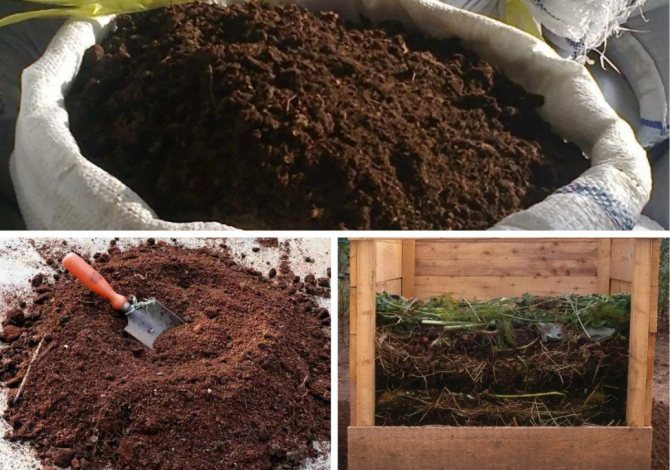

Humus, peat or compost are added to the soil.
Berry flavor, sweet varieties
Viburnum is wonderful for everyone, except for the taste of berries. For birds, this moment does not matter, but a person is so simple to eat a handful of useful, but bitter fruits. Therefore, the housewives always try, at least, to grind the viburnum with sugar. But if you wait for frost, there will be no need for additional sweetness. Frozen berries lose their bitterness. In addition, you can always dip the crimson crop in boiling water and the unpleasant taste will disappear.
And for those who do not want to wait, semi-sweet and sweet varieties have already been bred. Here is some of them:
- Vigorovskaya - one of the sweetest varieties. The taste cannot be called uniform: slightly sour, slightly bitter. But overall, the aftertaste is pleasant.
- Red bunch is famous for the highest content of vitamin C (140 mg). The taste of the berries is sweet and sour, a slight bitterness is barely perceptible.
- Viburnum berries Maria slightly tart in taste, bitterness is practically not felt, sweet and sour aftertaste, pleasant smell. This variety is practically resistant to diseases and insect pests.
DIY garden and vegetable garden
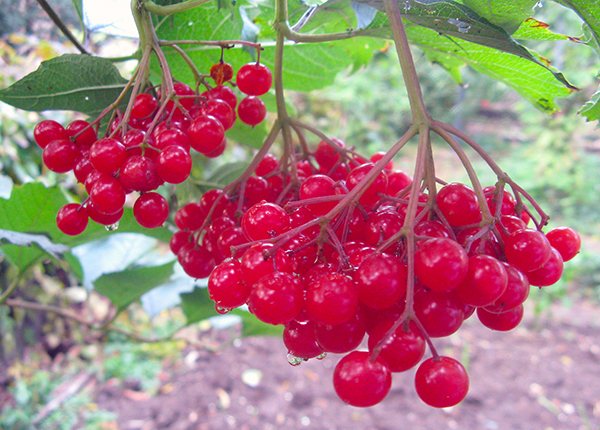

Kalina is familiar to many since childhood. She is like an original decoration: either snow-white, or with bright red clusters on multi-colored foliage. But she is known not only for her beauty. The berries of most varieties of viburnum are used to make desserts, compotes, fruit drinks, jelly, and even wines. From head to toe, this herb is beneficial and can be used to treat a wide variety of ailments. Both berries and bark, seeds, flowers, young twigs are used. Knowing about the benefits of viburnum, many are in a hurry to plant this bush in their area, which means it is necessary to learn about the agrotechnical features of this plant.
Pest control
Not all types of viburnum are lucky, most are still susceptible to attack by parasites, the main of which is aphids. She uses barely opened leaves of viburnum for food, lives and reproduces there. The "suppliers" of aphids are ants. However, the situation is not hopeless.
To prevent the appearance of parasites on the viburnum, it is necessary to pre-wrap the barrel with adhesive tape intended for flies or make a trapping belt. The main thing is that she holds well and clings tightly to everything that touches her.
In spring, young twigs need to be cut by 15-20 cm in order to prevent the young generation of aphids from spreading.
In addition, there are methods for treating the affected plant with chemical and biological preparations, as well as with the help of celandine infusion.
Summing up, it should be noted that no difficulties should prevent the appearance of viburnum on the site, since its benefits will pay off all the care efforts a hundred times.
How to choose quality seedlings
It turns out that thanks to the efforts of breeders, the culture we are used to today differs from that sung in folk art and is very diverse. Therefore, first you need to decide what exactly you want to see in your garden. You will have to choose from decorative varieties, which never have berries, fruitful, tree-like or bush-like, tall, dwarf and ground cover species.
All roots must be fresh, even, smooth and clean. To make sure the seedling is fresh, lightly scratch the bottom of the rootstock. If fresh greenish wood appears at the site of the wound, it means that the viburnum is suitable for planting.
Preparation of planting material
It is advisable to purchase seedlings with a closed root system - in pots or grown in the ground. This ensures better survival and quality rooting. The closed roots do not dry out, and the vegetative parts of such a plant do not need pruning.
The recommended height of the cuttings is from 20 cm. The leaves and branches of the seedling must be elastic.
Before planting, the viburnum is carefully examined, with the help of a secateurs, dried branches and dead roots are removed. A pot with a plant is soaked in water for 30-60 minutes, seedlings with open roots are kept in a solution of the drug to improve root formation.
Soil
Kalina prefers:
- neutral or slightly acidic (pH 5.5 to 6.5) soil;
- well-moistened land, but without stagnant water, therefore, selects areas with deeply buried groundwater (no closer than 1 m to the surface).
Sandy, peat and podzolic soil is not suitable for growing viburnum. A bush on such soil, most likely, will not bear fruit. Also, a well-consecrated site is needed for the plant, but partial shade is better.
Immediately before planting the seedling, the site is dug up and weeded. It is better to refuse the introduction of herbicides - they suppress the growth of not only weeds, but also seedlings.
Mineral or organic fertilizers are applied to poor soil a month before planting. So, for a landing hole measuring 60 × 60 × 50 cm, you need:
- 1 bucket of humus or peat;
- 0.5 tbsp. potassium sulfate;
- 1 tbsp. superphosphate;
- 1 tbsp. dolomite flour;
- 2 tbsp urea.
This "cocktail" is mixed with soil, poured into the hole by 2/3, 30-40 liters of water are poured on top.
Reference. Another variant of a nutritious mixture for planting viburnum: 3 kg of rotted manure, 250 g of ash and 10 g of "Nitroammofoski" per 1 m² of soil.
Features of care in spring, summer, autumn in the open field
The main care of the plant consists in loosening the near-stem soil, systematic watering, weeding, dressing, and pest control. In the spring, they harvest the leaves, loosen the ground under the bushes, and carry out preventive treatment of the bushes with fungicides to destroy overwintered pests. In summer, in addition to basic agricultural techniques, the plant is regularly treated against insect pests. In autumn, fallen leaves are collected and burned. They are treated against pests, fed. In the phase of stable frosts, fruit clusters are harvested. Before winter, young bushes are insulated with burlap, non-woven material. Peat is poured onto the ground of the trunk circle, with a humus layer of 10 cm.
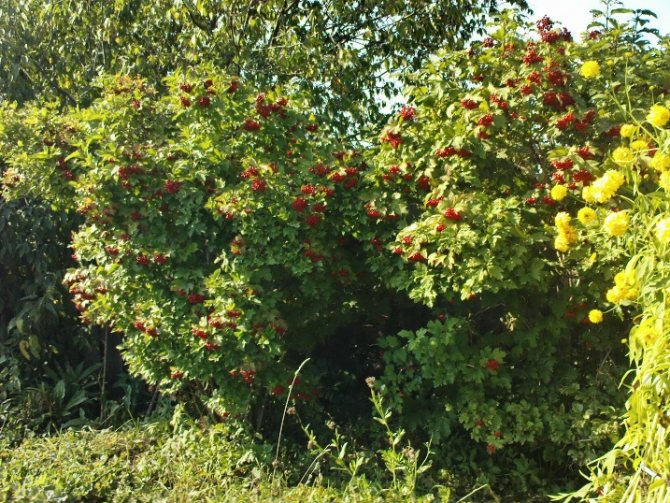

Which viburnum to choose: with red or black berries?
So that the viburnum does not disappoint the gardener, it will not hurt to get acquainted with its various varieties or species before purchasing seedlings. Biologists attributed the shrub to the Adoxaceae family, the elderberry belongs to the same family. Under natural conditions, viburnum likes to grow in areas with high soil moisture: on the banks of rivers, lakes, ponds. But even in a sunny meadow in the middle of the forest, you can often find a tree covered with bright berries.
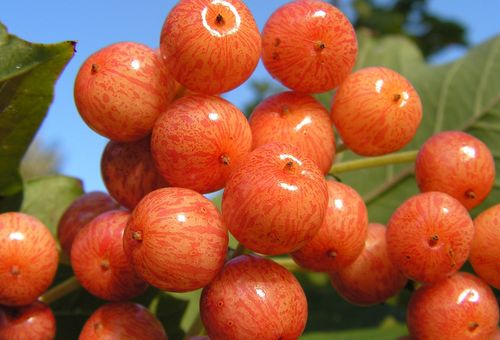

Despite the ability of viburnum to grow even in swampy areas, its cultivation is impossible in places where groundwater occurs. There are many varieties and types of shrubs, because you can meet it in any corner of the world. Here are the most popular varieties among Russian gardeners:
- Viburnum ordinary, it is red. Grows up to 3.5 m tall. The leaves are large, oval, divided into 3-5 parts, light green, wrinkled. Inflorescences are corymbose, berries are red with pronounced bitterness.
- Kalina gordovina. A species of Asian origin and equally exotic appearance. Leaves are large, oval, with pointed ends, pubescent, rich green color. Inflorescences are velvety, umbellate. Ripening berries of intense black color.
- Zarnitsa. The leaf blade is dissected, dark green on the upper side, and the lower surface is light pubescent. The berries are orange, tart, with a bitter taste. In the fall, the bush looks luxurious - flaming berries against the background of golden foliage.
Many gardeners grow viburnum because of its decorative flowering. In the second half of spring, the shrub opens up many large buds: pale pink, milk foam color, slightly yellowish.The inflorescences of the plant are of an extremely unusual shape: the flowers located in the middle look very modest compared to those located at the edges. A rim of large flowers is extremely attractive to the bees that pollinate it.
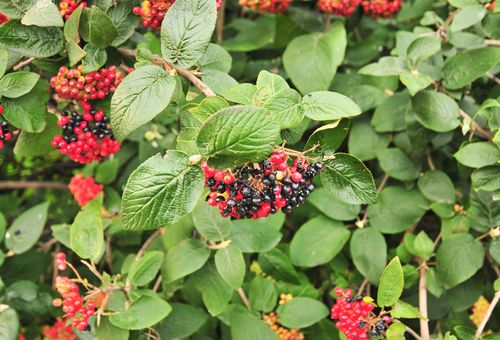

What are the methods of dealing with diseases?
From spotting and powdery mildew, there is such prevention:
Throughout the season, the plant must be pollinated with an infusion of tobacco, garlic and onions. This composition will not affect the taste and quality of the berries;
It is imperative to perform sanitary pruning, and the removal of plant debris and thinning of the bushes is also considered mandatory. This will significantly help stop the development of the infection, as well as destroy its foci.
From putrid lesions of the leaves, before budding, and also after flowering, viburnum must be treated with Bordeaux composition. Such drugs are also considered effective - Hom, Abiga-Peak.
What are the diseases of viburnum? How to deal with them?
Viburnum is considered a moisture-loving plant, but if the weather is too rainy, the moisture level is excessively high, then various fungal diseases can form on young shoots, some of the most common:
With increased humidity, dark spots and a coating of fungal sporulation begin to form on the leaves. It is necessary to get rid of this, since it is fraught with a slowdown in the growth of viburnum, a deterioration in tissue transpiration, young shoots inevitably begin to dry out. Also, the result of increased humidity is abundant premature fall of foliage. As a result, the plant will be poorly prepared for the winter period, there is a high likelihood of the plant drying out or a reduced yield with the onset of summer, since the infection continues to develop in plant debris.
Secrets of the correct landing: choosing a site
An unpretentious culture will grow in the sun, but it loves partial shade (some varieties are photophilous). Viburnum is undemanding to the soil, prefers neutral, slightly acidic soil. The structure of sandy, sandy loam soil for planting a plant is improved. The shrub is moisture-loving, but it can get sick from excess moisture. The occurrence of underground sources is recommended at least one meter to the soil level. With the help of viburnum, they create a hedge. A beautiful bush, planted correctly from a design point, will be the highlight of the site. Plant a shrub near a boring, unattractive fence, walls - it will mask imperfections, revive the picture.
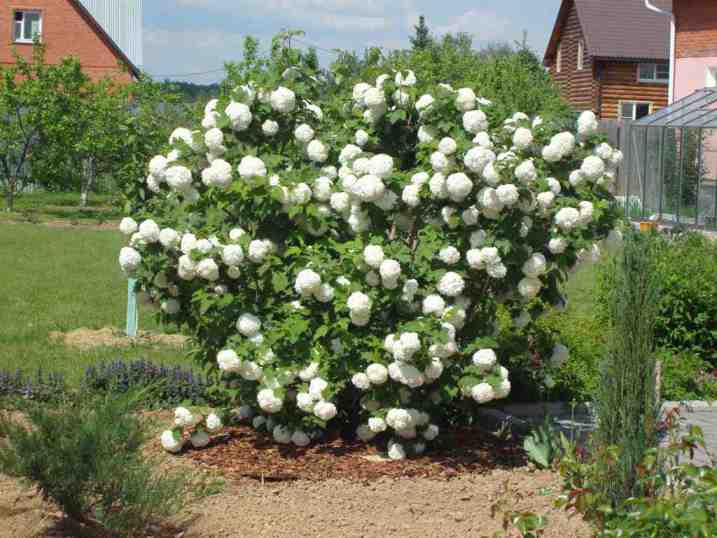

Viburnum diseases with photos and descriptions
Viburnum grown in the garden is susceptible to various diseases. There are relatively few of them and it is possible to cope with them, however, experts recommend timely preventive treatments of the plant so that the plant is always healthy. The most common diseases will be described below.
Powdery mildew
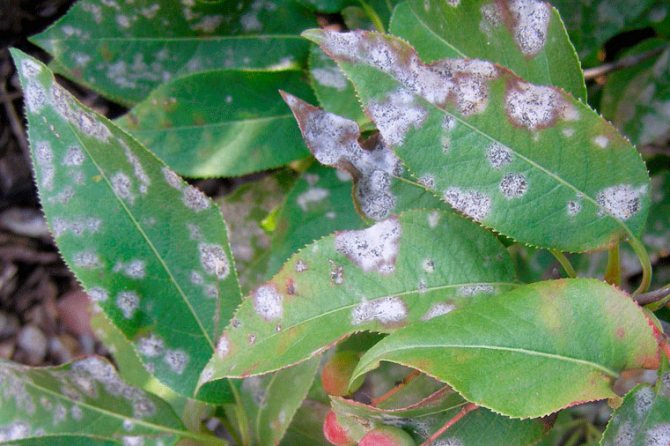

Powdery mildew is a fungal disease. In the affected specimen, a whitish bloom with drops of liquid forms on the surface of the leaf plates; over time, it turns brown. The infection spreads from the bottom of the bush to the top. In the affected specimen, the ovaries are not formed, which means that no fruits appear either. The bush becomes less frost-resistant. Decorative views become unattractive. To cure the plant, it is recommended to spray it with a solution of colloidal sulfur (for 1 bucket of water 50 grams of substance), you can also use fungicides for treatment, for example: Skor, Tiovit Jet, Topaz, Bayleton, Topsin, Quadris and other means of similar action.
Frosty burn
With a strong drop in temperature in winter, the plant may experience a frost burn. As a result, cracking of the bark, exposure and dying off of wood occurs. In frost-damaged branches on lateral shoots, leaf plates are faded, chlorotic, they become brown and dry quickly. By the second half of the summer period, the entire plant may dry out.In early spring, shoots that have suffered greatly from frost must be cut out. Stems that have not very large frost burns are coated with liquid clay in places of damage.
Ascochitous spot of viburnum
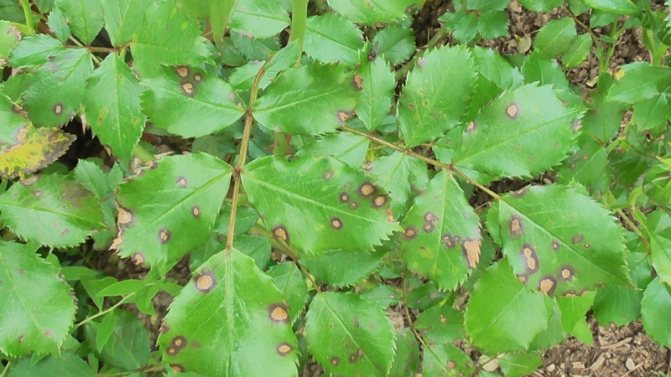

If gray spots of a round or angular shape with dark brown or purple edging appear on the leaf plates, this means that the viburnum is infected with ascochitous spotting. Where spots have formed, tissue dies off, and fruiting bodies of the fungus appear on its surface. Gradually, this tissue becomes covered with cracks and spills out. To cure the plant, in the autumn, when all the foliage has flown around, it must be raked and destroyed. In spring, when sap flow just begins, it is necessary to treat the plant with Bordeaux liquid or copper oxychloride.
Gray rot
If the weather is damp and cool in the summertime, the likelihood of developing gray rot is high. In the affected specimen, large brown spots of indistinct outlines are formed on the leaf plates. Such spots grow in size very quickly, and the tissue in their middle cracks and dries up. Infected fruits turn brown, mycelium grows through them. In the autumn, it is imperative to rake up all the leaves and fruits that have flown around, and destroy them. Then the plant is sprayed with Vectra.
Fruit rot
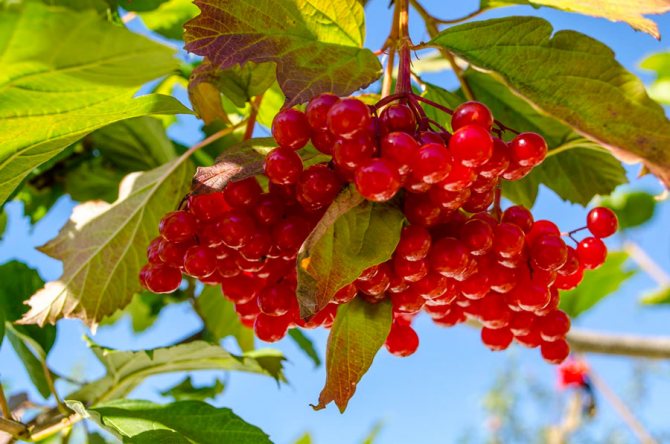

If the viburnum is affected by fruit rot, then it has a drying out of leaf plates, flowers, young stems and berries. Initially, dense small gray pads appear, which eventually turn black and dry out. Affected mummified fruits should be torn off the plant without fail and removed from the surface of the site. As soon as it becomes clear that the bush is infected, it should be sprayed with copper oxychloride or Bordeaux liquid.
Bush formation
The culture is formed in the form of a bush or tree. Formation is carried out in early spring. To form a bush in the next summer season, after rooting, branches are cut at the level of 3 nodes. When young branches grow up to 30 cm, the growth points are cut off. After the operation, shoots are formed from the awakened buds. Then the branches older than 6 years are removed, leaving the basal ones. The most optimal option: 8 main branches. Pinching shoots at a height of 30-40 cm stimulates their bushiness. To give the shape of a tree (formed within 2-3 years), cut off all branches, leaving the vertical one that will be the stem. In the lower part of the future trunk, all the kidneys are removed. When the tree grows to 1.5-2 meters, the growth point on the trunk is pinched. This stimulates the formation of lateral branches. In order for the tree to retain its shape, the root shoots are constantly removed, and lateral shoots on the lower part of the trunk. For preventive purposes and with the aim of better ventilation and lighting of the bushes in the spring, in the fall, they clear the shrub from the shoots directed inside the bush. Old shoots are partially removed.
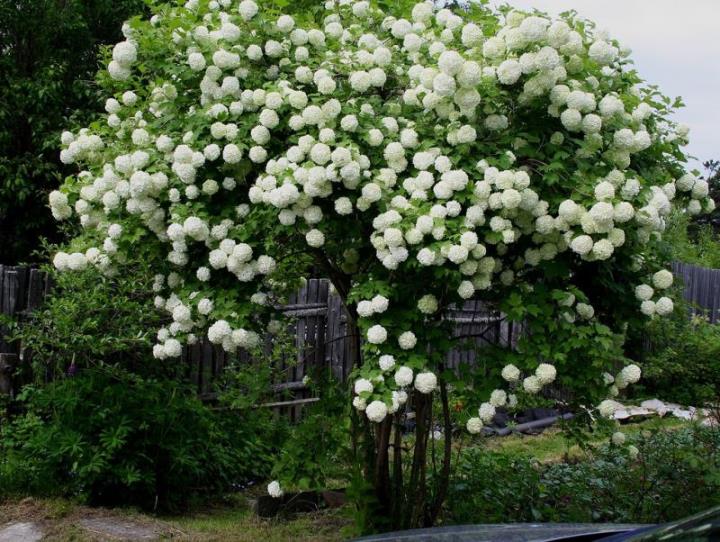

Ornamental pruning of shrubs
Viburnum can be grown as a tree or shrub. More than 10 strong branches with grayish cracked bark grow from the root of the plant. In bush cultivation, all the shoots are left intact, allowing them to grow at random. But the crown is formed to your liking, cutting off the resulting shoots.
Tip: Prophylactic pruning is done several times over the summer. With the help of a pruner, they get rid of dry twigs.
If it is planned to grow a tree from viburnum, then you need to start acting with the arrival of spring. All lateral branches are removed, leaving only the most powerful central one. As it matures, it will become the trunk of a tree. It is required to periodically cut all the shoots growing by the plant. After 2 years, the growth point is pinched to form a spreading crown.
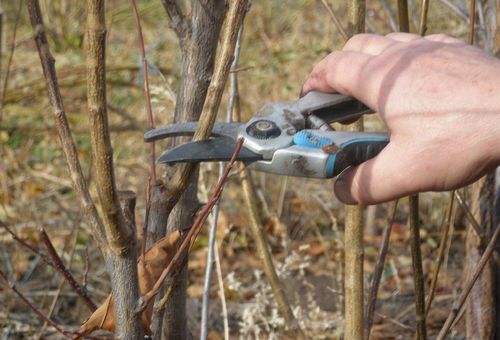

Content
- Description
- Planting viburnum When to plant
- Planting in spring
- Planting in autumn
- Spring care
- When to trim
- How to propagate
- Beneficial features
How to transplant viburnum in the summer: basic transplant rules
Viburnum bush can be transplanted within one site, buy it, ask neighbors, or transplant wild viburnum directly from the forest.
In any case, the transplant rules will be the same. It is worth remembering that any transplant is carried out in several stages: preparation for the transplant, the transplant process itself and careful care of the transplanted plant. Viburnum transplant rules:
- First, a tree is prepared for transplantation. It is advisable to replant a young and healthy tree. If it has damaged branches, they need to be removed. Then they dig in the bushes around the trunk. This must be done carefully so as not to damage the roots. Too long and thick root processes must be chopped off and the cut site should be lubricated with something disinfectant.
- Then you need to prepare a place for planting the shrub. First, they dig a hole about half a meter deep and of the same diameter. If the soil on the site is not too nutritious, the topsoil is mixed half with humus. For more nutrition, you can add some ash and urea.
- If you are replanting viburnum to create a beautiful alley, or simply planting in a part of the garden where there are other large shrubs and trees, try to maintain the spacing. It is desirable that the distance between them be at least 3 meters. Then the plants will not interfere with each other either with crowns or roots.
- Before transplanting viburnum from the forest, you need to carefully look at its branches for damage.
- There is no difference between how to transplant viburnum in autumn, spring or summer. The process itself is the same, only care after transplantation differs, since the spring transplant precedes active sap flow, and the autumn transplant precedes the wintering period.
- For transplanting, it is better to choose a cloudy day, then the plant will take root better. Better if it is a rainy or foggy day.
Watering and nutritious feeding of the shrub
Watering the viburnum will not bring labor to the gardener. If the summer turned out to be dry, with little rainfall, then the bush should be watered abundantly from a hose 3-4 times a week. A rainy summer may not require the introduction of moisture at all - the water accumulated in the soil will be enough for the viburnum in abundance. Do not neglect mulching the surface of the earth under the plant in spring: this way the number of irrigations can be significantly reduced.
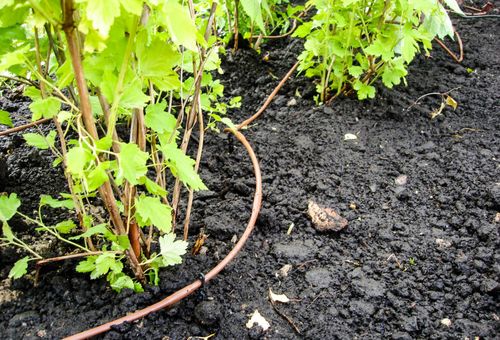

Tip: in addition to maintaining soil moisture, mulching relieves the gardener for a long time from loosening the soil and fighting insects. The number of insects harmful to viburnum is also decreasing.
Viburnum is a powerful plant, blooming for a long time, therefore, fertilizing during its cultivation should be abundant and in large quantities. The shrub is fertilized according to the following scheme:
- With regular watering, you can use granular fertilizers. 200 g of fertilizers with a high nitrogen content in the spring should be scattered under the plant. The introduction of nitrogen fertilizers will help the viburnum to grow a lot of green shoots and leaves.
- Before flowering, a generous portion (100-150 g) of phosphorus fertilizers is applied. Viburnum will respond to such feeding with more abundant than usual formation of large buds, which are subsequently transformed into a large bunch of sweet berries.
- In order for the tree to winter well, it will need potash fertilizers. After applying them, it will build up a powerful root system.
In the fall, 2 kg of rotted organic matter must be stirred in 10 liters of water and insisted. The resulting mixture should be watered at the root of the plant.During the winter, the fertilizer will decompose and provide the root system of the shrub with nutrients. Kalina gordovina can grow up to 5-6 m tall. Fertilization for such a tree is required in large quantities.
Dangerous harmful insects
Garden pests do not bypass the viburnum. They like to settle on young leaves and under thin bark. Here are the most dangerous ones:
- The moth is green lobed.
- Viburnum leaf beetle.
- Callina Galitsa.
- Black leaf aphid.
If insects are found, act immediately. All parts of the shrub should be thoroughly treated with a solution of any insecticide 3-4 times a month. In the period remaining before wintering, the viburnum must be observed. An especially strong specimen of the pest could survive after a chemical attack and give birth to offspring.
The common viburnum is considered to be the most unpretentious and resistant to pest attacks among gardeners. It grows well among other trees, shrubs and flowers. Dwarf plant varieties are planted in the spring on the sides of garden paths. In autumn, owners collect several kilograms of tasty tart berries from tall specimens.
The healing properties of viburnum berries and leaves have been known for a long time. With their help, you can reduce pressure, cure colds, get rid of skin rashes. The hostess makes fortified jelly and filling for pies from the berries. And men in the fall do magic in the kitchen, insisting on alcohol, berries and leaves for the preparation of liqueurs and liqueurs.
Many people immediately associate the definition of "red" with the word "viburnum".
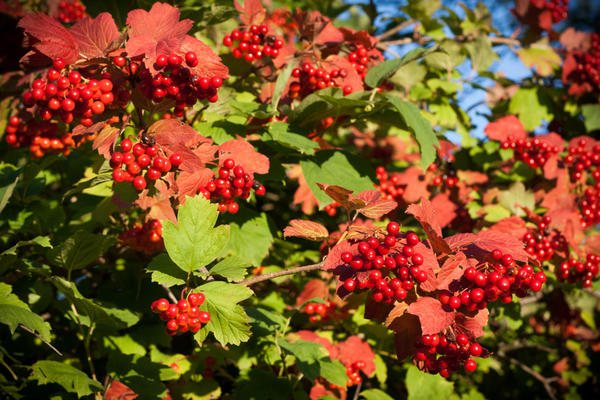

Viburnum (Viburnum)
But in our time, viburnum has so many varieties that the color of the berries can even be black. Kalina is loved by many for its beauty both in spring and autumn. At the beginning of summer, she pleases us with beautiful umbrella or spherical inflorescences about 15 cm in diameter with snow-white or pale pink flowers. And in the fall, the carved foliage of the viburnum becomes especially beautiful, glowing with numerous shades of orange and crimson-red with scarlet berries hanging from the branches. The fruit can hang from the tree before the snow falls, making it a particularly tasty treat for birds.
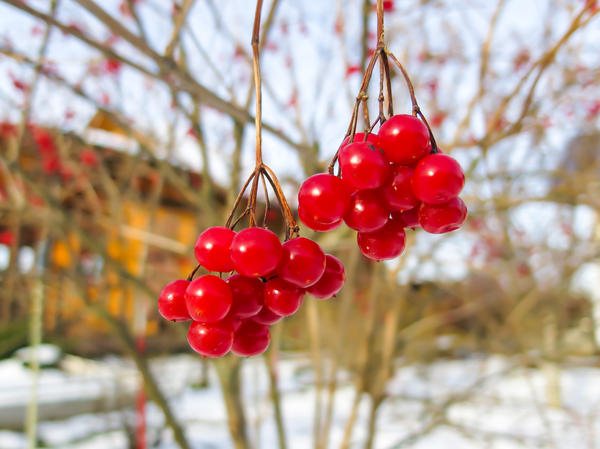

The fruits can hang on the tree before the snow falls.But these berries are also valuable for people, because they are very useful and even medicinal, and like flowers and viburnum bark, they are used in traditional medicine recipes. There are also barren, decorative varieties of viburnum, valuable with beautiful foliage, bush shape, lush inflorescences.
Varieties and varieties of viburnum, their features
Recently, many varieties and varieties of viburnum have been bred, with attractive decorative properties and a peculiar taste of berries.
Varieties of viburnum with increased decorative properties
Viburnum crowns often delight the eye with their beauty, but there are several varieties that are of greatest interest due to the special attractiveness of their appearance.
Kalina Roseum
First of all, this variety of viburnum is valued for its snow-white flowers 1.5 cm in size, which are collected in balls of inflorescences up to 10 cm in diameter. At the beginning of flowering, they have a greenish tint, at the end - pinkish. The plant blooms from May to June. Roseum viburnum flowers are sterile, so they do not form fruits.
The variety is a tall shrub with a lush and spreading crown in height and a diameter of 2 to 5 m. Green leaves in autumn are painted in red-orange tones.
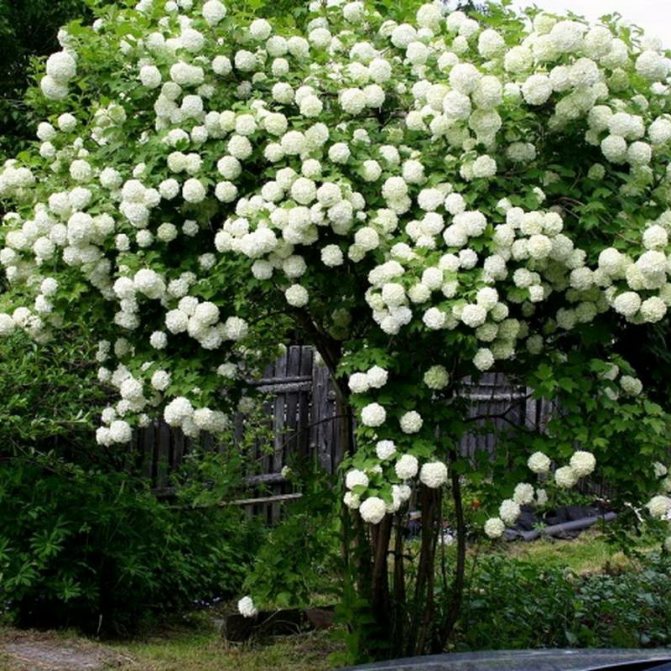

Kalina Roseum is famous for its white inflorescences up to 10 cm in diameter
Viburnum Snow Globe
Variety of viburnum Snow Globe, or Buldenezh (from the French boule de neige - snowball) grows up to 3.5 m. The branches form a wide crown. To enhance the effect of the perception of magnificent white inflorescences (up to 15 cm in diameter), gardeners give the crown of the bush a hemisphere shape. The flowers of the viburnum Snow Globe are also sterile, do not give fruit.
The plant begins to bloom in May and lasts about a month.At first, the buds have a pale green color, then their shade changes to cream or pale pink, finally, when fully blooming, they become snow-white. In autumn, the leaves are of a beautiful crimson color.
The bush lives for a long time and still blooms until the age of 60 years.
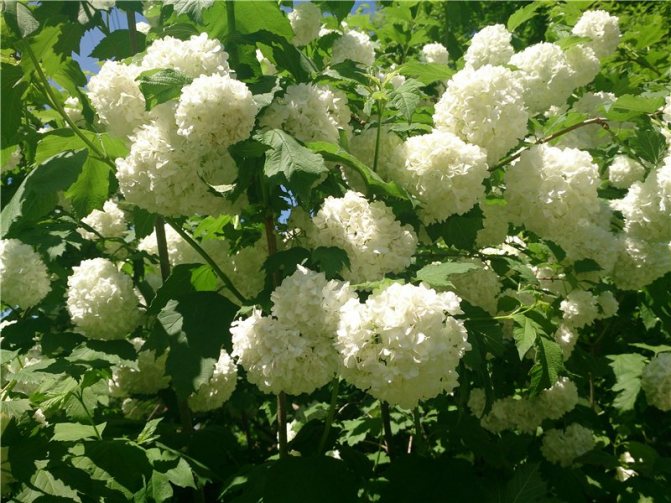

Viburnum Snow Globe is known for its large inflorescences
Kalina Sargent "Onondaga" (Onondaga)
Refers to the type of viburnum Sargent. Hardy, shade-tolerant. The leaves are bright green, large, 12x10 cm in size. The inflorescences of this plant are decorative: in the center there are fertile buds of a red-burgundy hue, and the circle is framed with large (up to 3 cm) white sterile flowers. Flowering occurs in June.
Unlike previous ornamental varieties, the Sargent "Onondaga" viburnum bears fruit in September. Fruits are juicy, small, orange-red.
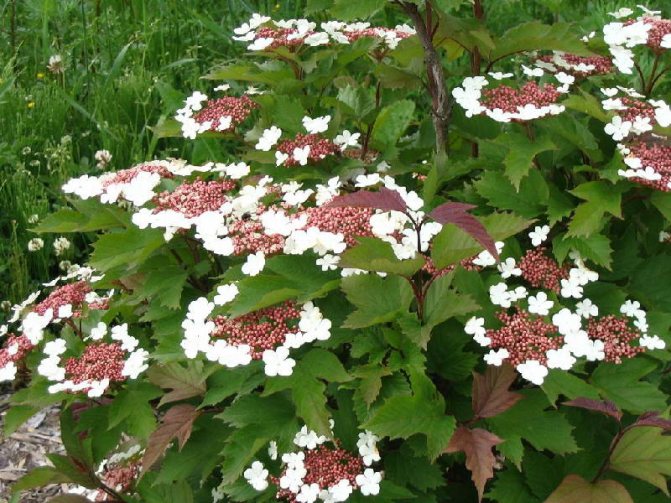

Kalina Sargent "Onondaga" has unusual decorative inflorescences
Kalina Eskimo
The flowering of this plant is so abundant that shoots and branches are almost invisible. It is formed in the form of a spherical bush or tree with a stem of about 0.6 m with a rounded crown. The leaves are dark green, shiny, leathery, ovoid.
Flowering begins in the second half of May and lasts a long time. Large (up to 10 cm in diameter) snow-white inflorescences-balls exude a pleasant aroma.
Viburnum Eskimo grows slowly.
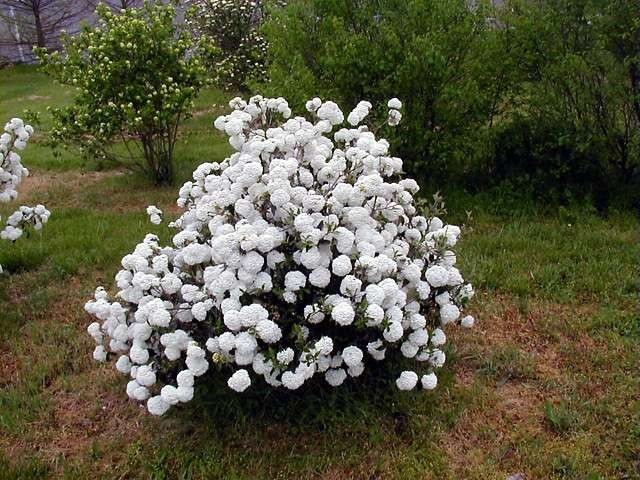

Kalina Eskimo blooms so profusely that branches are almost invisible
Viburnum fruit varieties
Breeders have also bred fruit varieties.
Table: characteristics of fruit varieties
| Variety name | Description of the variety |
| Leningrad elite | The bush is medium-sized, 2–2.5 m high, frost-resistant, mid-season. The variety is self-fertile, therefore, to obtain a harvest, a close arrangement of viburnum of other varieties is required. The fruits are large, round, of pleasant taste with noticeable sweetness, the color is ruby-red. The plant prefers lighted places. The bush has a medium spreading crown |
| Ulgen | A mid-season variety (fruits ripen in mid-September), the name of which comes from the Altai phrase "good spirit". The bright red round fruits are covered with a dense skin and have a sweetish taste with bitterness. Fruit cluster consists of 35-50 juicy drupes. Shrub up to 4 m high, yields 5-10 kg. Differs in resistance to diseases and aphids. Responds well to watering |
| Taiga rubies | A medium-ripening variety that gets its name from its beautiful bright ruby ball-shaped berries. Fruits are round, medium in size with yellow flesh, weighing 0.5-0.7 g, sweetish, slightly bitter taste. The plant develops as a shrub with a rounded oval crown or tree. Productivity - 8-11 kg per bush. Fruiting begins at the age of 4, occurs regularly, without a decrease in yield up to 20 years. When planting this variety of viburnum, it is necessary to take into account that it is self-fertile and needs pollination of other varieties and seedlings of common viburnum |
| Red bunch | Mid-season variety, bred by employees of the Michurin All-Russian Research Institute of Genetics and Breeding of Fruit Plants. Average yield, 2.5-4 kg of berries per bush. Resistant to diseases and pests. The berries are spherical, large, dark burgundy, sweet and sour taste with pleasant bitterness. The bush is medium-sized. The variety is self-fertile, but experts advise to plant at least one viburnum bush of another variety next to it to increase yields |
| Zholobovskaya | The variety was obtained at the N.I. M. A. Lisovenko. The bush is up to 2.5 m high. The shoots are smooth, light gray. Green leathery leaves of medium size, 3-5-lobed. The dark red globular fruits ripen at the end of September. The berries are juicy, medium-sized (0.6-0.7 g) with a good slightly bitter taste. Productivity - about 5 kg per bush, annual fruiting. The variety is winter-hardy, disease resistant. Self-infertile, therefore it needs a neighboring arrangement of viburnum bushes of other varieties |
| Maria | The mid-season variety is named after the breeder Maria Plekhanova. A bush with thick shoots, up to 3 m high.Leaves are green, wrinkled, in autumn they turn purple and golden. The fruit cluster contains 45-50 rounded berries of light red color, weighing 0.6 g. The taste is sweetish-sour with a slight tart shade. Bears fruit annually. Productivity - 5 kg per bush. The variety is winter-hardy. Differs in high resistance to diseases and pests |
| Shukshinskaya | The variety is named after the truly popular writer, actor and director V. M. Shukshin, who shot the piercing film "Kalina Krasnaya". Medium ripening. A bush with thick light gray shoots, up to 3 m high. The leaves are light green, 3-5-lobed. The berries are crimson-red, weighing 0.57 g. The taste is slightly bitter. Fruiting is stable. Average yield - 6 kg of fruits per bush. The variety is winter-hardy, disease resistant. Demanding on soil moisture. Self-sterile. All varieties of Viburnum are suitable for pollination of flowers. |
| Michurinskaya early | An early ripe variety bred at the N.N. I. V. Michurin. Differs in the large size of spherical red berries - up to 1 g. Fruits have a sweetish slightly bitter taste, they can be consumed fresh. The yield is high - up to 10-15 kg per bush. High bush, up to 4 m. Winter-hardy variety |
| Red coral | Bred by breeders VNII them. I. V. Michurin. Also a large-fruited variety, a mass of bright red spherical berries - up to 1 g. The taste of fruits is sweetish, slightly bitter with a strong aroma. The yield is high - more than 10 kg of fruits per bush. The bush is medium-sized, compact. The variety is self-fertile, can be used for pollination of self-fertile varieties of Viburnum vulgaris |
| Cherished | A variety of medium ripening. The bush is medium-sized, with straight shoots of medium thickness. Winter hardiness is high. Bright red berries have a spherical shape, weight - 0.74 g. The taste is sweet and sour with a slight bitterness. Productivity - about 2.5-4 kg of fruit per bush. The variety is self-fertile; to obtain a harvest, the neighborhood of other varieties of Viburnum is necessary |
| Zarnitsa | A variety of medium ripening. Tall bush - up to 3.5 m - with light gray smooth shoots. The leaves are green, large, with 3-5 lobes. Fruits are bright red, elliptical, weighing 0.6-0.8 g. Bitter taste. The variety has a technical purpose, the fruit makes a good jam. Average yield - 6.5 kg per bush. Fruiting steadily, does not reduce yield up to 25 years. Resistant to diseases and pests. Self-infertile, all varieties of viburnum are used for pollination |
Photo gallery: fruit varieties of viburnum
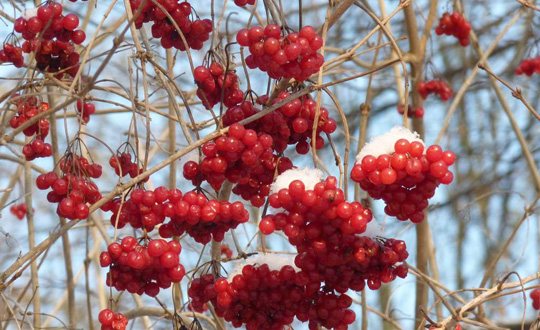

Kalina Michurinskaya early has large berries
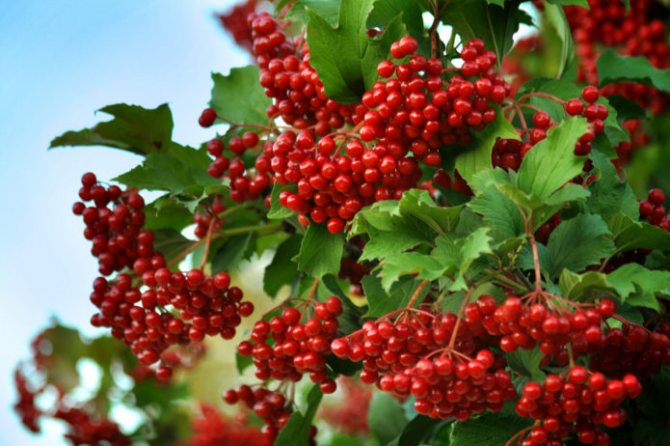

Viburnum Maria has many fruits in the brush
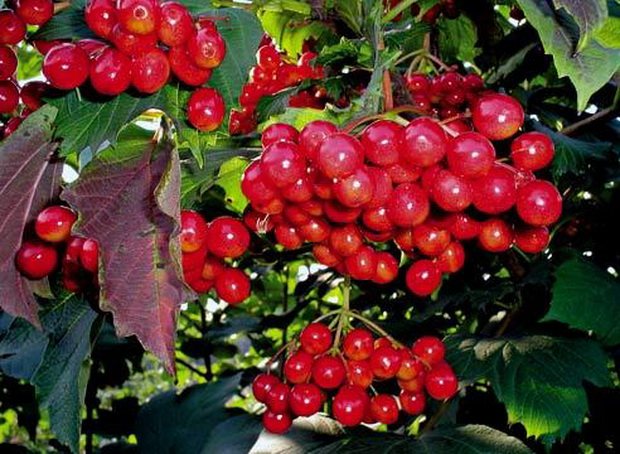

Kalina Zarnitsa is a technical grade
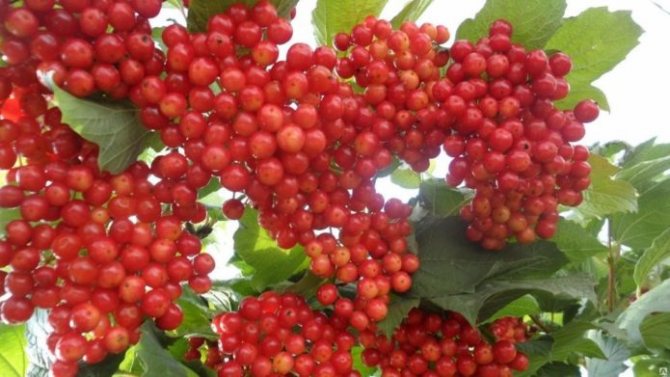

Kalina Ulgen is considered a fruitful variety
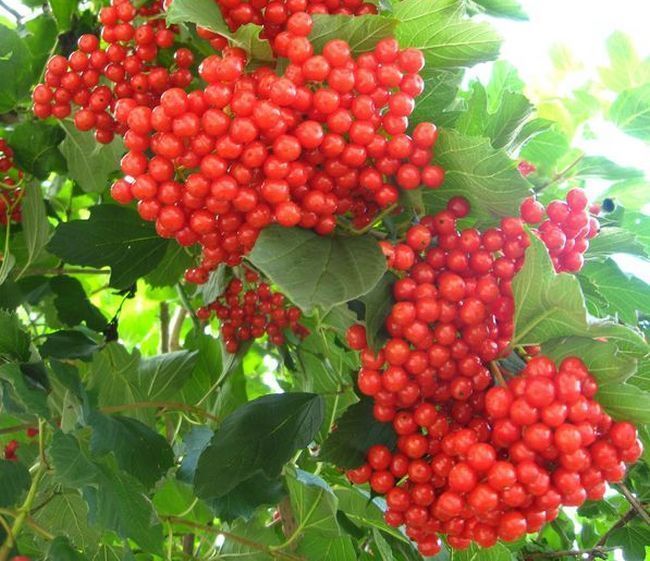

Viburnum Red bunch is a mid-season variety
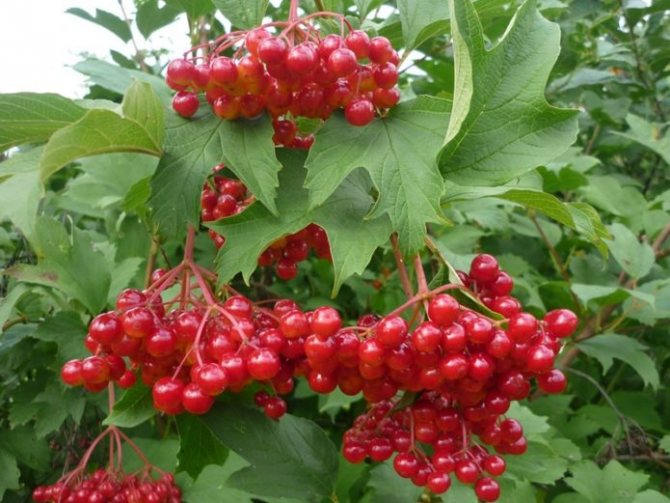

The berries of the viburnum Zholobovskaya ripen at the end of September
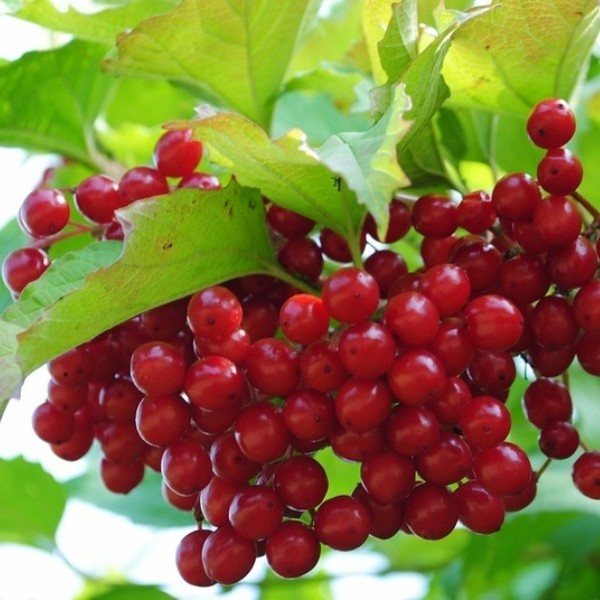

Viburnum Red coral gives high yields
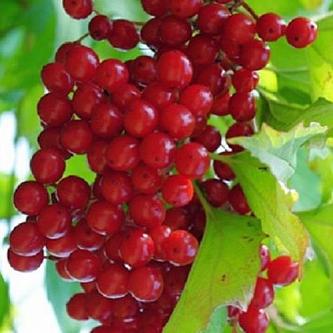

Viburnum Cherished medium ripening
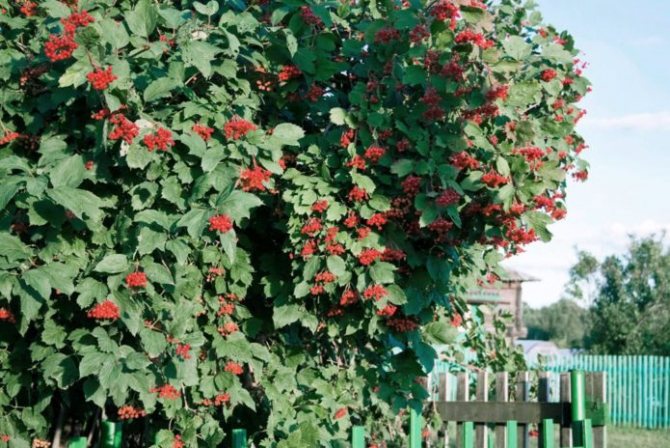

Kalina Shukshinskaya named after a Russian writer
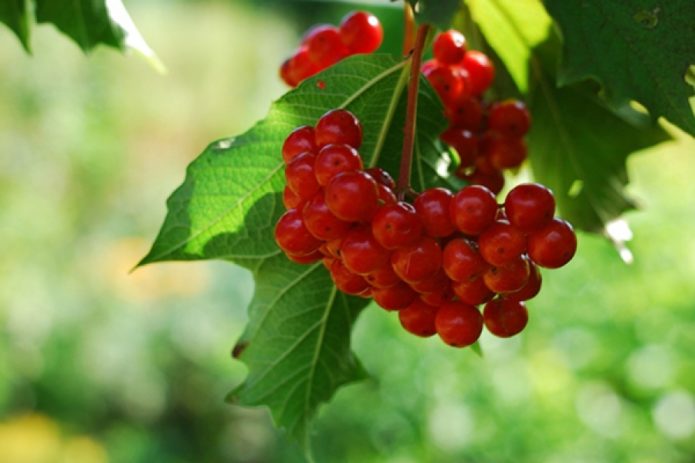

Viburnum has Taiga rubies bright ruby berries
.
Performing simple agricultural techniques, you can decorate your garden with magnificent crowns and flowers of viburnum, as well as get a harvest of healthy sweetish fruits with a characteristic bitterness.

